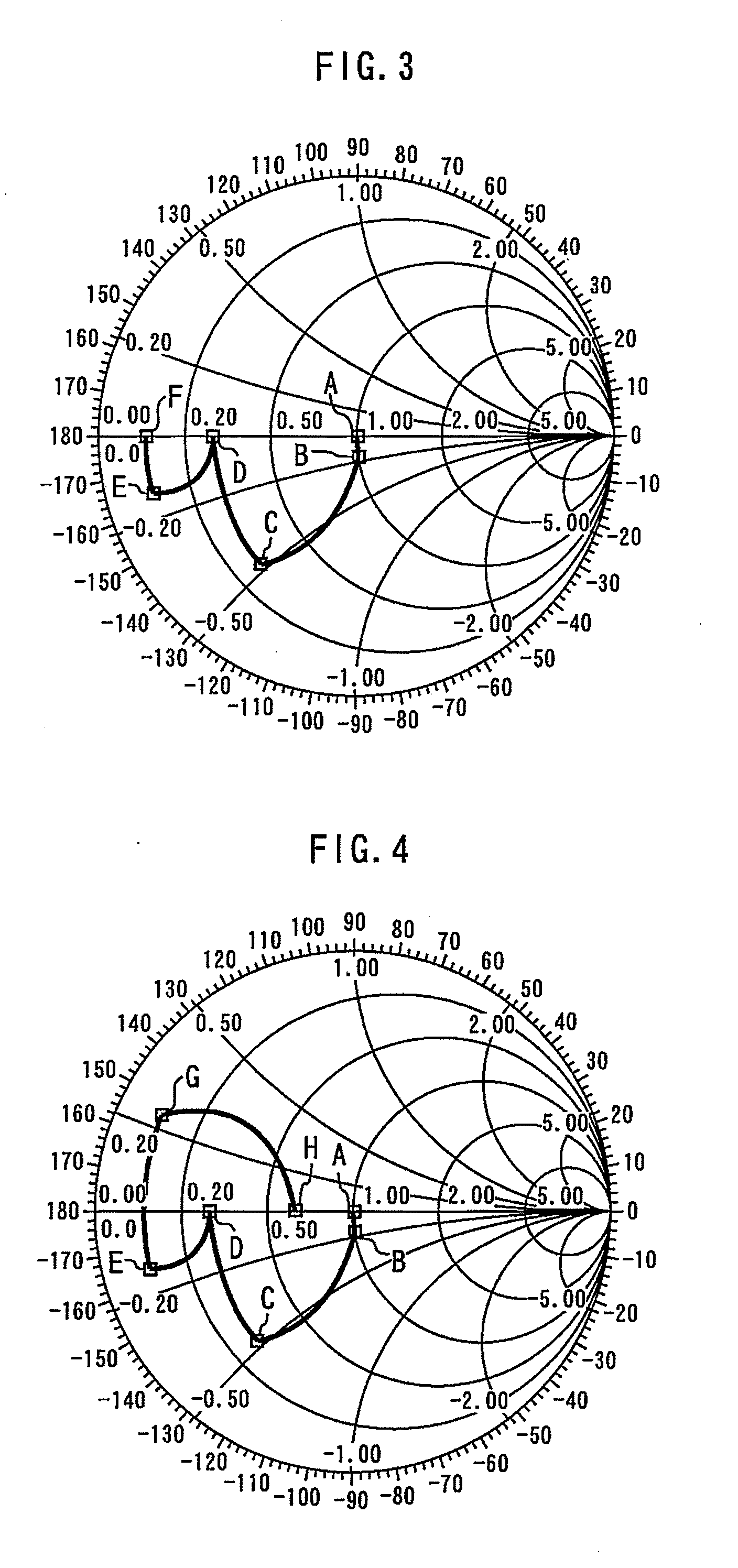Power amplifier
a power amplifier and amplifier technology, applied in the field of power amplifiers, can solve the problems of large loss due to parasitic resistance of inductors, capacitors, switches, etc., and achieve the effect of reducing loss and being less sensitive to the variation of elements or frequency characteristics
- Summary
- Abstract
- Description
- Claims
- Application Information
AI Technical Summary
Benefits of technology
Problems solved by technology
Method used
Image
Examples
first embodiment
[0028]FIG. 1 is a circuit diagram showing a power amplifier according to a first embodiment of the present invention. The input (base) of an amplifier element Tr1 is connected to the input terminal IN via a matching circuit M1. A switch SW1 and a matching circuit M2 are connected between the output (collector) of the amplifier element Tr1 and the input of the amplifier element Tr2. A matching circuit M3a is connected between the output of an amplifier element Tr2 and an output terminal OUT.
[0029]An end of a switch SW2 is connected to the output of the amplifier element Tr1. The output of the amplifier element Tr1 is connected to the output terminal OUT via the switch SW2 and a matching circuit M3b. To the amplifier elements Tr1 and Tr2, a collector voltage from a power source Vcc is applied via inductors L1 and L2, respectively.
[0030]The output matching circuit has a matching circuit M3a for high outputs, and a matching circuit M3b for low outputs, and both are switched by a switch ...
second embodiment
[0039]FIG. 6 is a circuit diagram showing a power amplifier according to a second embodiment of the present invention. The matching circuit M3a for high output is constituted by inductors L3 and L7, and capacitors C2, C3, C5, and C6. The matching circuit M3b for low output is constituted by inductors L6 and L7, and capacitors C2, C3, C4, C5, and C6. Here, the values of L7 and C6 in the second embodiment are set to be seen as the same inductance as the L4 in the comparative example.
jωL4=jωL7+1jωC6[Formula2]
[0040]In the matching circuits M3a and M3b, an inductor L7 and a capacitor C6 is connected in series between the output of the amplifier element Tr2 and the output terminal OUT. The other end of the switch SW2 is connected to the connecting point Y to connect the inductor L7 and the capacitor C6 via the inductor L6 and the switch SW3. The other components are similar to the components of the first embodiment.
[0041]FIG. 7 is a diagram showing the impedances viewing the output side f...
third embodiment
[0043]FIG. 9 is a circuit diagram showing a power amplifier according to a third embodiment of the present invention. In the third embodiment, the components in the low-gain low-output mode (the third mode) are added to the components of the first embodiment.
[0044]The matching circuit M3a for high output is constituted by the inductors L3, L4, and L5, and the capacitors C1, C2, and C3. The matching circuit M3b for low output is constituted by the inductors L4, L5, L6, L8, and L9, and the capacitors C1, C2, C3, C7, and C8. The matching circuit M3c for low output is constituted by the inductor L9, the capacitor C8, and the switch SW5 in addition to the components of the matching circuit M3b.
[0045]The inductor L7 and the capacitor C8 are connected in series between the other end of the switch SW2 and the grounding point. The inputted signals are amplified by the third amplifier element Tr3. An end of the switch SW4 is connected to the output port of the amplifier element Tr3. The othe...
PUM
 Login to View More
Login to View More Abstract
Description
Claims
Application Information
 Login to View More
Login to View More - R&D
- Intellectual Property
- Life Sciences
- Materials
- Tech Scout
- Unparalleled Data Quality
- Higher Quality Content
- 60% Fewer Hallucinations
Browse by: Latest US Patents, China's latest patents, Technical Efficacy Thesaurus, Application Domain, Technology Topic, Popular Technical Reports.
© 2025 PatSnap. All rights reserved.Legal|Privacy policy|Modern Slavery Act Transparency Statement|Sitemap|About US| Contact US: help@patsnap.com



